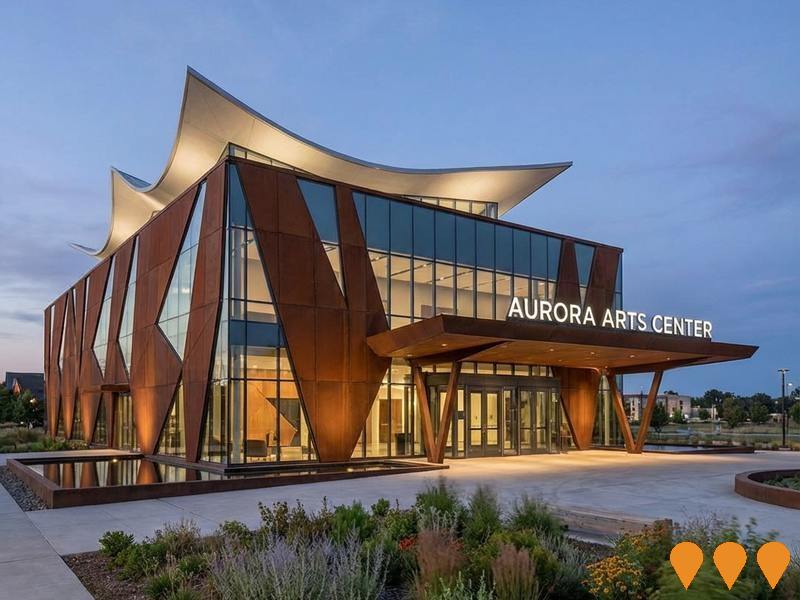Chart Color Schemes
est. as @ -- *
ABS ERP | -- people | --
2021 Census | -- people
Sales Activity
Curious about local property values? Filter the chart to assess the volume and appreciation (including resales) trends and regional comparisons, or scroll to the map below view this information at an individual property level.
Find a Recent Sale
Sales Detail
Population
An assessment of population growth drivers in Duffy reveals an overall ranking slightly below national averages considering recent, and medium term trends
Duffy's population, as of Aug 2025, is approximately 3,434. This figure represents an increase of 39 people since the 2021 Census, which recorded a population of 3,395. The change is inferred from ABS data showing an estimated resident population of 3,429 as of June 2024 and an additional 11 validated new addresses since the Census date. This results in a population density ratio of 1,226 persons per square kilometer, higher than the average across national locations assessed by AreaSearch. Duffy's growth rate of 1.1% since the 2021 census exceeded the SA3 area's growth rate of 0.5%, indicating it as a regional growth leader. Overseas migration contributed approximately 67.0% to overall population gains in recent periods, driving primary population growth in the area.
AreaSearch uses ABS/Geoscience Australia projections for each SA2 area, released in 2024 with a base year of 2022. For areas not covered by this data and years post-2032, age group growth rates from ACT Government's SA2 area projections are adopted, using 2022 as the base year. Future demographic trends anticipate lower quartile growth across statistical areas nationally. Based on current population numbers, Duffy is expected to grow by 88 persons to 2041, recording a total gain of 2.4% over the 17-year period.
Frequently Asked Questions - Population
Development
Residential development activity is lower than average in Duffy according to AreaSearch's national comparison of local real estate markets
Duffy has seen around 5 new homes approved each year over the past 5 financial years, totalling 28 homes. As of FY-26, 6 approvals have been recorded so far. On average, 5.5 new residents per year are associated with every home built between FY-21 and FY-25. This indicates supply is lagging demand, leading to heightened buyer competition and pricing pressures.
New homes are being constructed at an average cost of $331,000. In FY-26, there have been $209,000 in commercial approvals, indicating minimal commercial development activity. Compared to the Australian Capital Territory, Duffy shows approximately 75% of construction activity per person and ranks among the 16th percentile nationally, suggesting limited buyer options while demand for established properties strengthens. Recent construction comprises 50.0% standalone homes and 50.0% townhouses or apartments, marking a shift from the area's existing housing composition of 88.0% houses. This indicates decreasing availability of developable sites and reflects changing lifestyles. Duffy has approximately 1001 people per dwelling approval, demonstrating an established market with population forecasts indicating a gain of 83 residents by 2041.
With current construction levels, housing supply should meet demand adequately, creating favourable conditions for buyers while potentially enabling growth that exceeds current forecasts.
Frequently Asked Questions - Development
Infrastructure
Duffy has moderate levels of nearby infrastructure activity, ranking in the 49thth percentile nationally
No infrastructure changes or major projects have been identified by AreaSearch that could significantly impact the area. Among the key projects are Molonglo Group Centre to Town Centre Transition, Fetherston Weston, Deakin Private Hospital, and Ngurra Cultural Precinct, with the following list providing more details on those likely to be most relevant.
Professional plan users can use the search below to filter and access additional projects.
INFRASTRUCTURE SEARCH
 Denotes AI-based impression for illustrative purposes only, not to be taken as definitive under any circumstances. Please follow links and conduct other investigations from the project's source for actual imagery. Developers and project owners wishing us to use original imagery please Contact Us and we will do so.
Denotes AI-based impression for illustrative purposes only, not to be taken as definitive under any circumstances. Please follow links and conduct other investigations from the project's source for actual imagery. Developers and project owners wishing us to use original imagery please Contact Us and we will do so.
Frequently Asked Questions - Infrastructure
Low and Mid-Rise Housing Policy
State-wide NSW planning reforms via amendments to the State Environmental Planning Policy to enable more diverse low and mid-rise housing (dual occupancies, terraces, townhouses, manor houses and residential flat buildings up to 6 storeys) in well-located areas within 800 m of selected train, metro and light-rail stations and town centres. Stage 1 (dual occupancies in R2 zones statewide) commenced 1 July 2024. Stage 2 (mid-rise apartments, terraces and dual occupancies near stations) commenced 28 February 2025. Expected to facilitate up to 112,000 additional homes over the next five years.
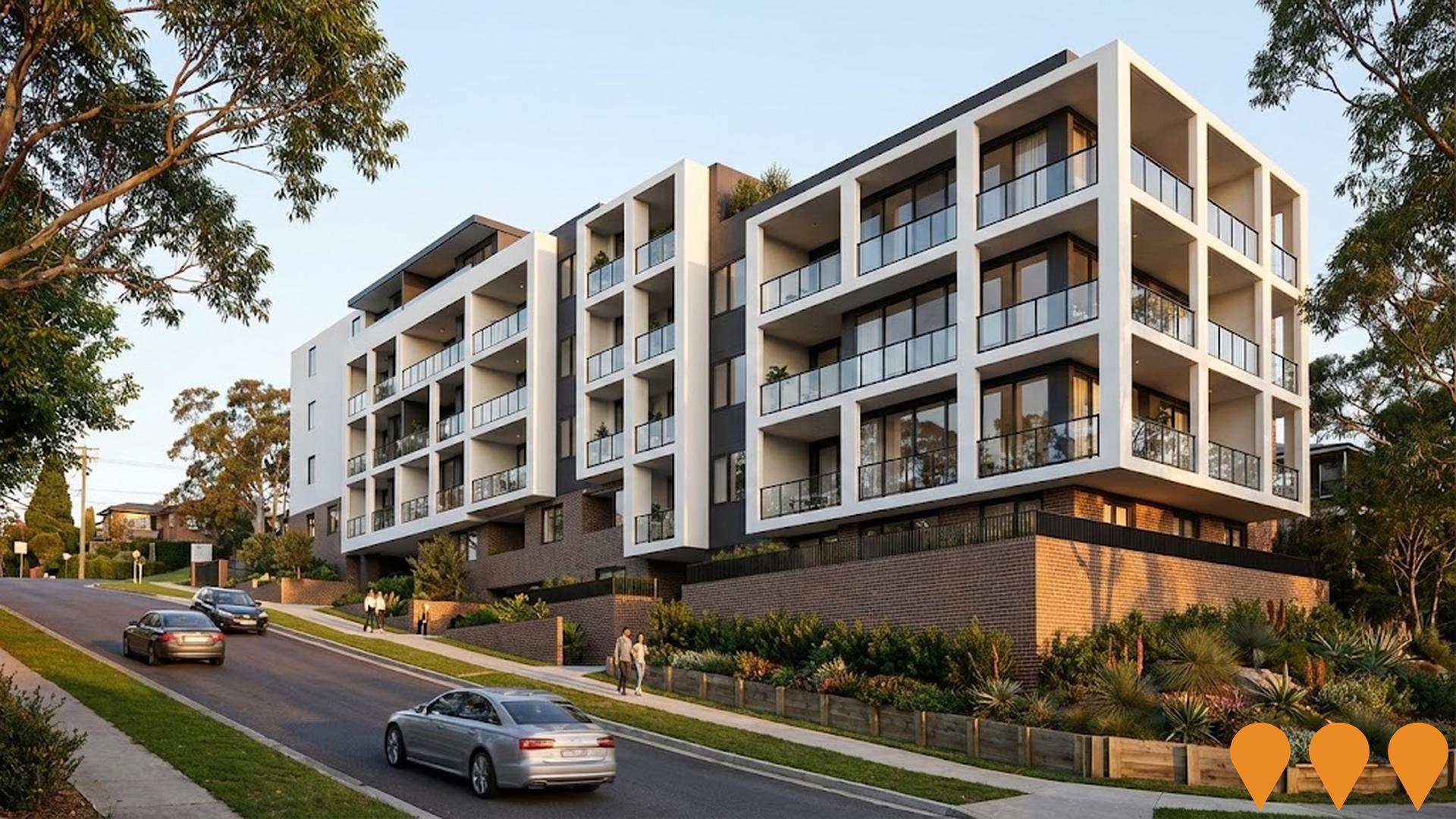
Molonglo Group Centre to Town Centre Transition
Transition of Molonglo Group Centre to Town Centre status to accommodate 70,000+ residents by 2050. Will include college, library, community centre, transport interchange and major commercial centre development.
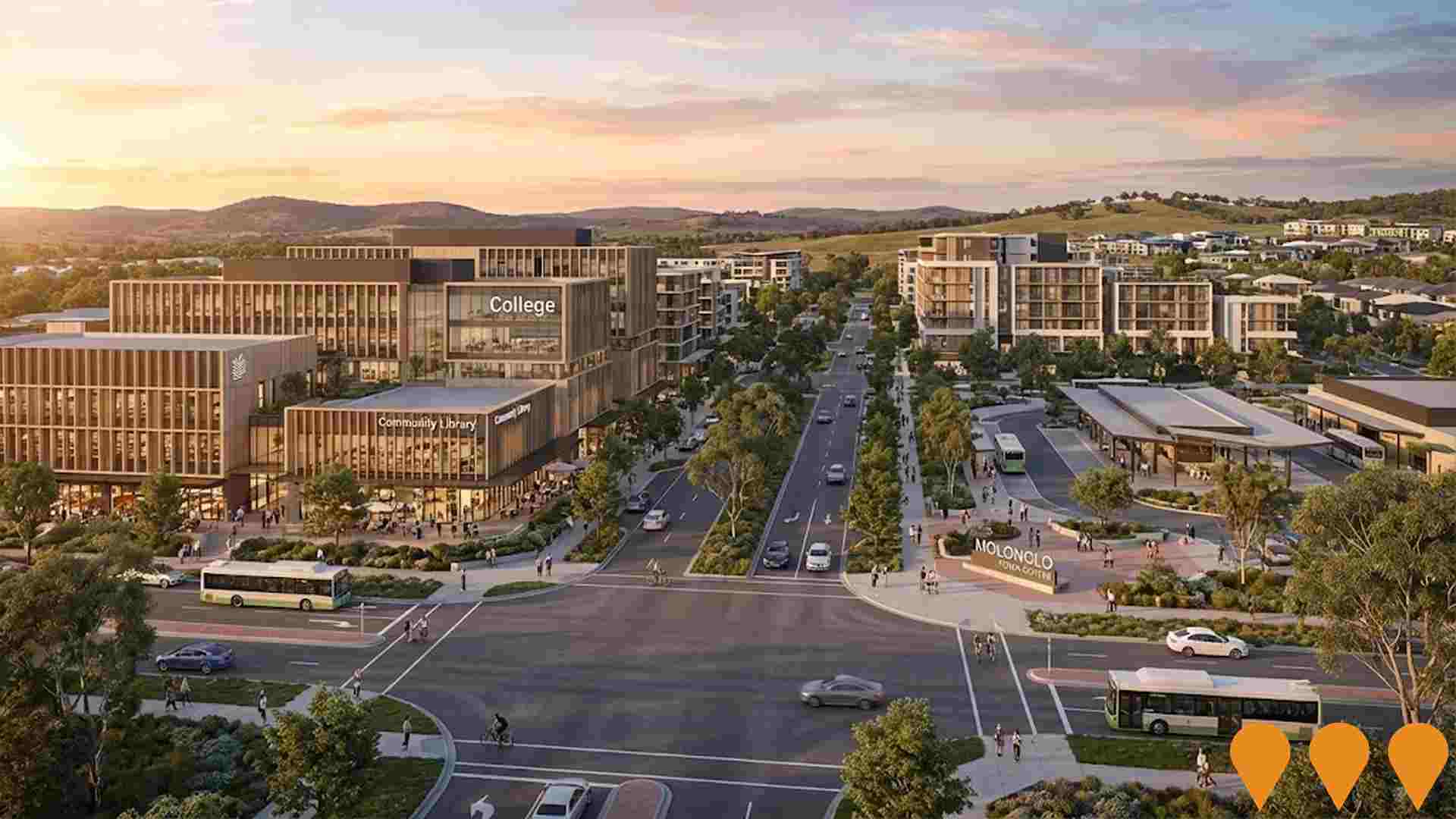
Enhanced bus and light rail corridors (Belconnen & Queanbeyan to Central Canberra)
ACT is progressing an integrated program to enhance high-frequency bus and future light rail corridors that link Belconnen and Queanbeyan with central Canberra. Light Rail Stage 2A (City to Commonwealth Park) commenced construction in early 2025 with services targeted from 2028, while planning and approvals continue for Stage 2B to Woden. The ACT Government has acknowledged and is planning upgrades for the Belconnen-to-City bus corridor as groundwork for a future east-west light rail Stage 3, and is coordinating cross-border public transport initiatives with NSW through the Queanbeyan Region Integrated Transport Plan and the ACT-NSW MoU for Regional Collaboration.
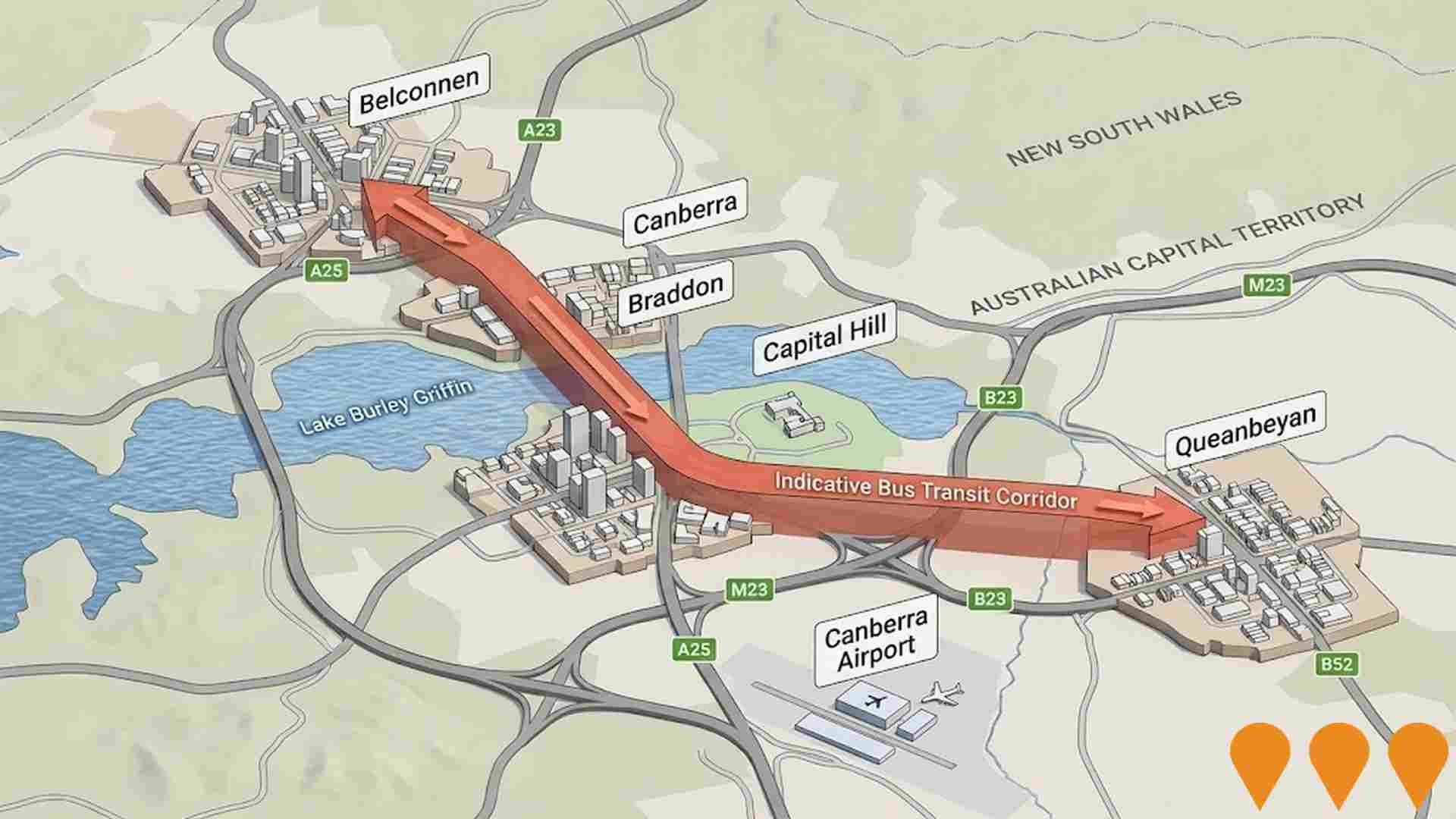
HumeLink
HumeLink is a new 500kV transmission line project connecting Wagga Wagga, Bannaby, and Maragle, spanning approximately 365 km. It includes new or upgraded infrastructure at four locations and aims to enhance the reliability and sustainability of the national electricity grid by increasing the integration of renewable energy sources such as wind and solar.
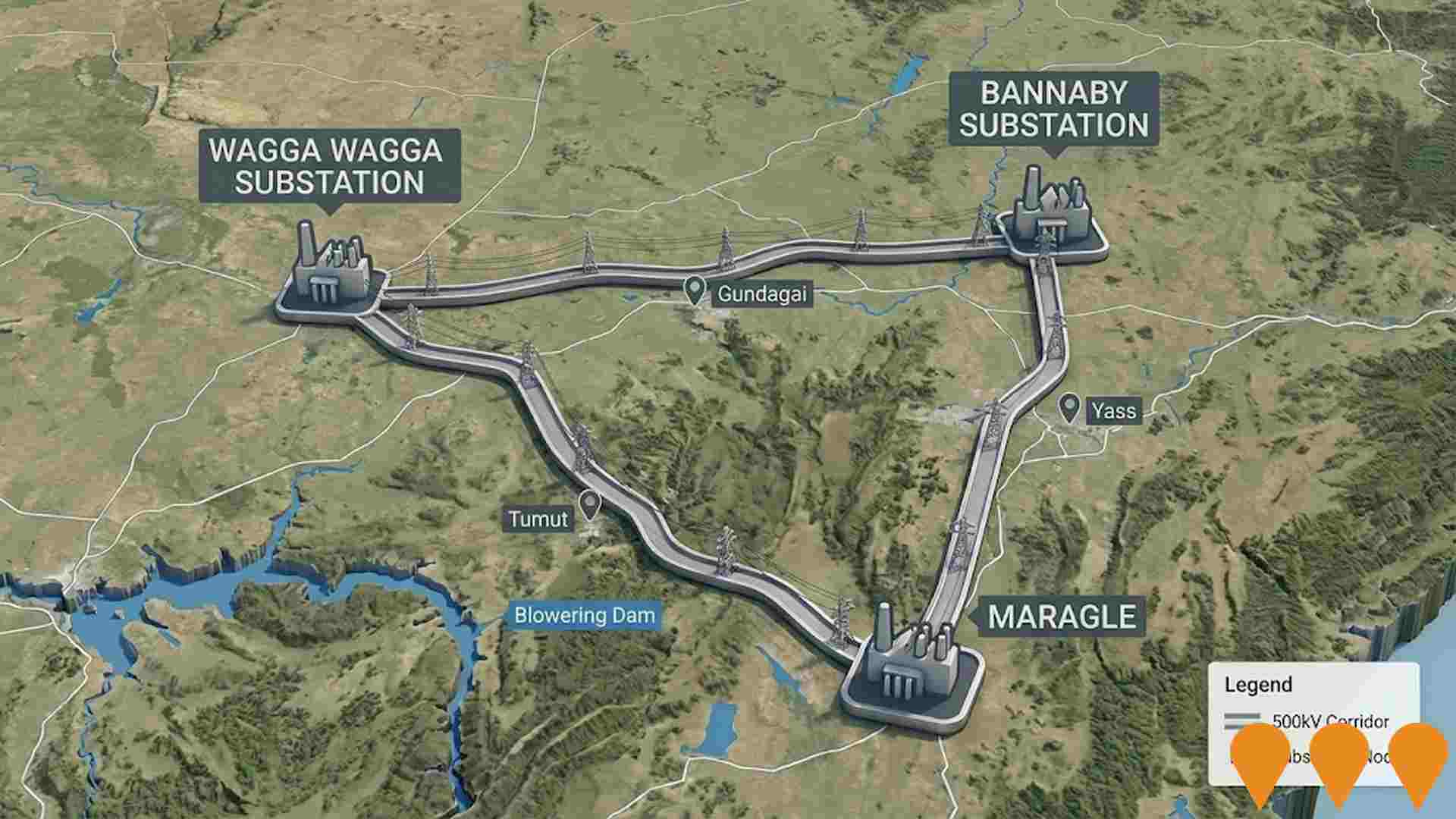
Queanbeyan Regional Integrated Transport Plan
Comprehensive transport planning initiative with 64 key actions for next 10 years. Addresses road safety, active transport connectivity, public transport availability, and future transport needs. Improved connections between Queanbeyan and ACT.
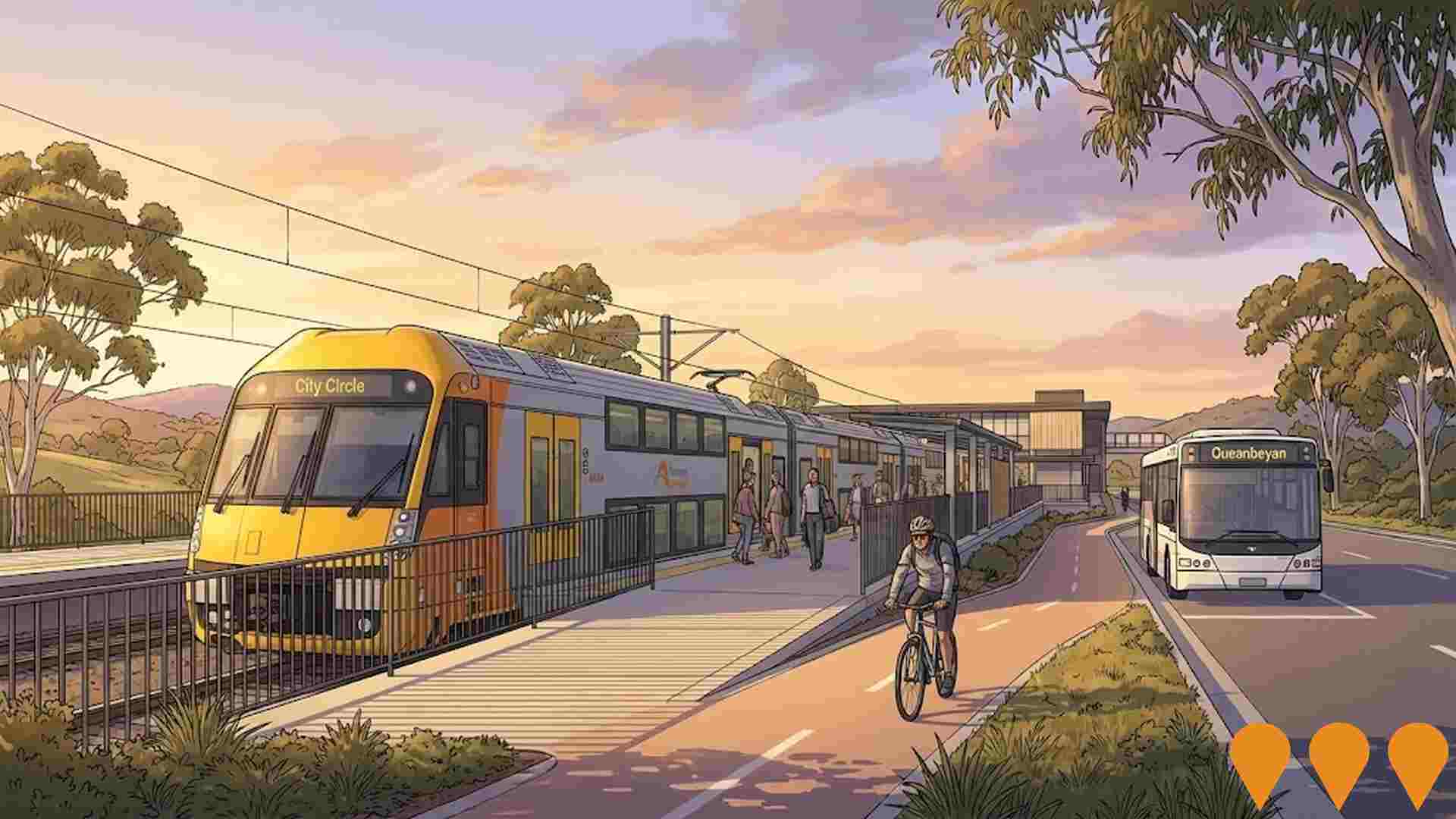
Big Canberra Battery (Williamsdale BESS)
A 250 MW / 500 MWh battery energy storage system at Williamsdale in southern Canberra, delivered by Eku Energy as Stream 1 of the ACT Government's Big Canberra Battery. Construction commenced in November 2024 with partners CPP and Tesla supplying Megapack systems. The asset will connect to Evoenergy's 132 kV network near the Williamsdale substation to provide two hours of dispatchable power, grid services and reliability for the ACT. Target operations in 2026.
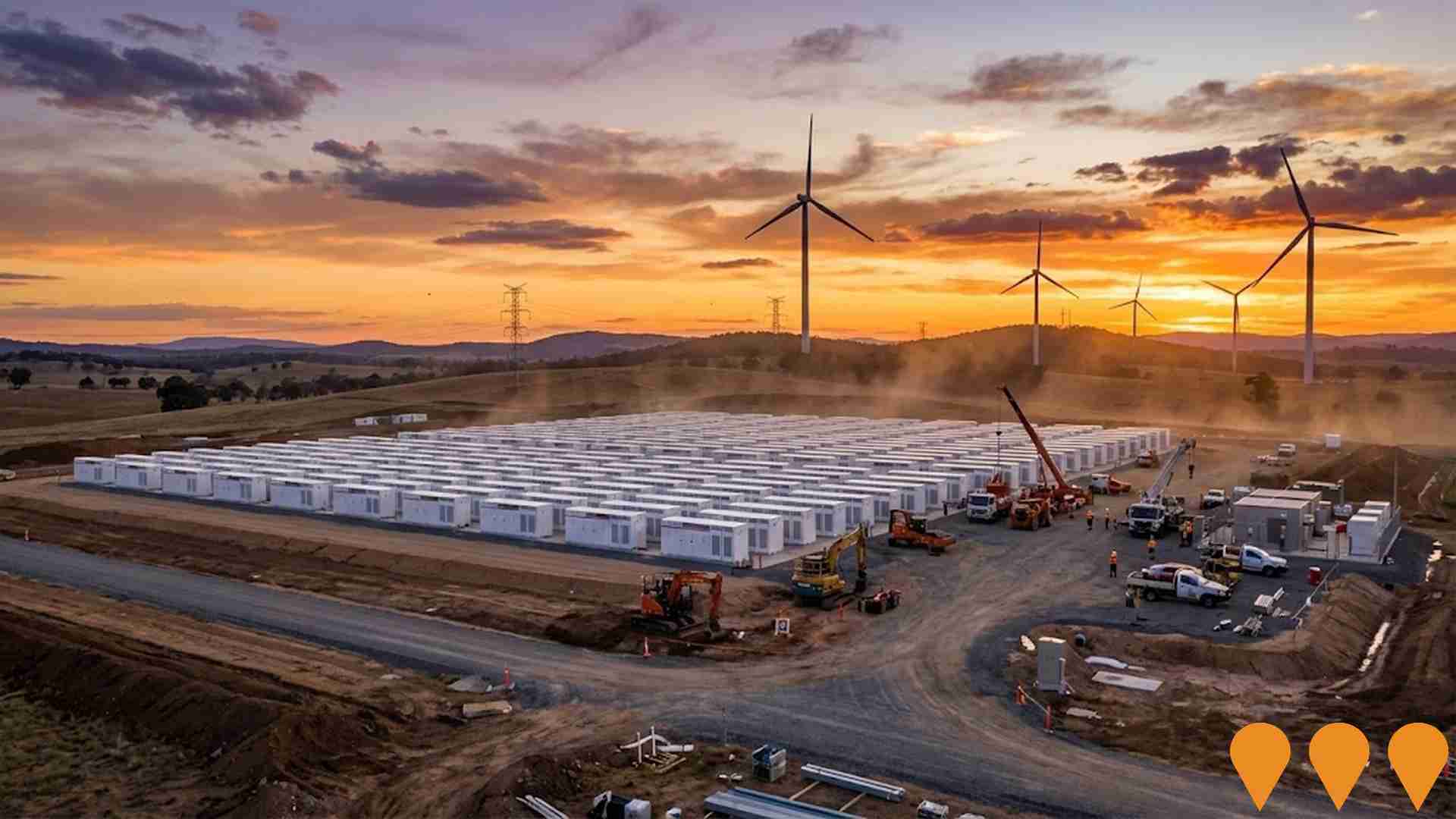
NSW Heavy Vehicle Rest Stops Program (TfNSW)
Statewide Transport for NSW program to increase and upgrade heavy vehicle rest stopping across NSW. Works include minor upgrades under the $11.9m Heavy Vehicle Rest Stop Minor Works Program (e.g. new green reflector sites and amenity/signage improvements), early works on new and upgraded formal rest areas in regional NSW, and planning and site confirmation for a major new dedicated rest area in Western Sydney. The program aims to reduce fatigue, improve safety and productivity on key freight routes, and respond to industry feedback collected since 2022.
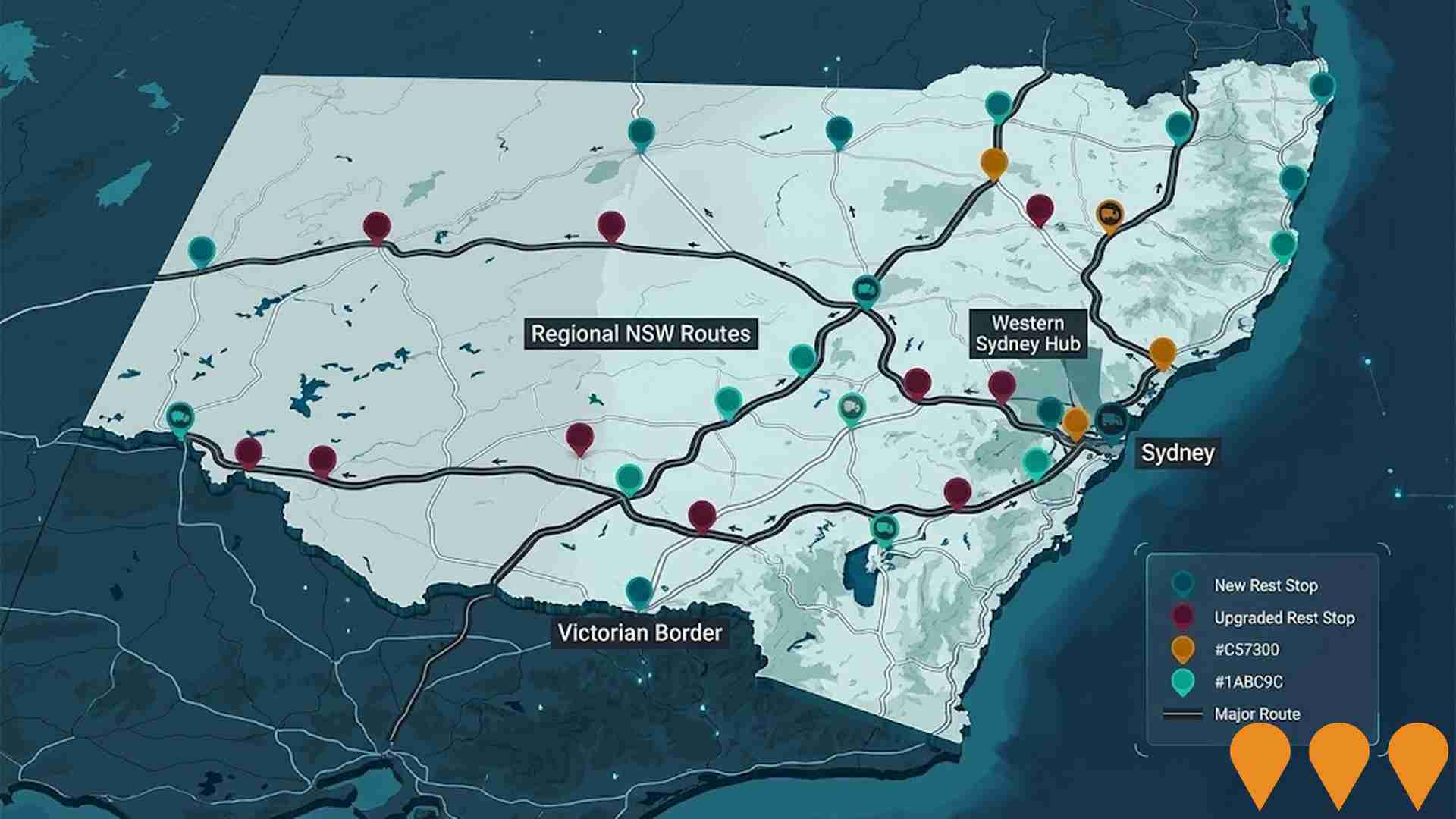
Deakin Private Hospital
Deakin Private Hospital offers premium and integrated inpatient, day therapy, and hospital-in-the-home services, focusing on individualised and high-quality mental health treatment. It includes a Specialised PTSD & Trauma Support Unit for military and first responders, and services such as Repetitive Transcranial Magnetic Stimulation (rTMS) for depression. The hospital also features co-located clinics and is supported by a multidisciplinary team of Psychiatrists, Medical, Nursing, and Allied Health professionals.

Employment
Employment performance in Duffy has been broadly consistent with national averages
Duffy has an educated workforce with significant representation in essential services sectors. The unemployment rate was 3.3% as of June 2025, with an estimated employment growth of 1.1% over the past year.
In June 2025, 1850 residents were employed, with an unemployment rate of 3.4%, comparable to the Australian Capital Territory (ACT). However, workforce participation was lower at 66.5% compared to ACT's 69.6%. Key employment sectors include public administration & safety, professional & technical services, and health care & social assistance.
The accommodation & food sector is under-represented with only 5.0% of Duffy's workforce compared to ACT's 6.5%. Limited local employment opportunities are indicated by the difference between Census working population and resident population figures. Between June 2024 and June 2025, employment levels increased by 1.1%, labour force grew by 1.6%, causing unemployment to rise by 0.4 percentage points. In comparison, ACT recorded employment growth of 1.9% with a decrease in unemployment by 0.3 percentage points. Jobs and Skills Australia's national employment forecasts from May 2025 project overall employment growth of 6.6% over five years and 13.7% over ten years. Applying these projections to Duffy's employment mix suggests local growth of approximately 6.5% over five years and 13.2% over ten years, though these are simple extrapolations for illustrative purposes and do not account for localized population projections.
Frequently Asked Questions - Employment
Income
The economic profile demonstrates exceptional strength, placing the area among the top 10% nationally based on comprehensive AreaSearch income analysis
Duffy's median income among taxpayers was $70,808 in financial year 2022. The average income stood at $84,236 during the same period. These figures compare to those of the Australian Capital Territory, which had a median income of $68,678 and an average income of $83,634. As of September 2025, current estimates suggest Duffy's median income would be approximately $80,438 and the average income around $95,692, based on a Wage Price Index growth of 13.6% since financial year 2022. Census data indicates that household, family, and personal incomes in Duffy all rank highly nationally, between the 92nd and 94th percentiles. Income brackets show that 31.6% of Duffy's community earns between $1,500 and $2,999 weekly (1,085 individuals), which is consistent with broader trends across regional levels showing 34.3% in the same category. Notably, 43.3% of residents earn above $3,000 weekly, reflecting prosperous pockets that drive local economic activity. After housing costs, residents retain 87.2% of their income, indicating strong purchasing power. The area's SEIFA income ranking places it in the 9th decile.
Frequently Asked Questions - Income
Housing
Duffy is characterized by a predominantly suburban housing profile, with ownership patterns similar to the broader region
Dwelling structure in Duffy, as evaluated at the latest Census, comprised 87.9% houses and 12.1% other dwellings. In comparison, Australian Capital Territory had 81.7% houses and 18.2% other dwellings. Home ownership in Duffy was 37.6%, similar to Australian Capital Territory's figure. Mortgaged dwellings made up 43.3% and rented dwellings were 19.1%. The median monthly mortgage repayment in Duffy was $2,476, higher than the Australian Capital Territory average of $2,251. The median weekly rent in Duffy was $445, compared to Australian Capital Territory's $420. Nationally, Duffy's median monthly mortgage repayments were significantly higher at $2,476 compared to Australia's average of $1,863. Rents in Duffy were substantially higher than the national figure of $375.
Frequently Asked Questions - Housing
Household Composition
Duffy features high concentrations of family households, with a higher-than-average median household size
Family households account for 77.3% of all households, including 37.2% couples with children, 26.8% couples without children, and 11.3% single parent families. Non-family households constitute the remaining 22.7%, with lone person households at 20.3% and group households making up 3.1%. The median household size is 2.7 people, which is larger than the Australian Capital Territory average of 2.6.
Frequently Asked Questions - Households
Local Schools & Education
Duffy shows strong educational performance, ranking in the upper quartile nationally when assessed across multiple qualification and achievement indicators
Educational attainment in Duffy exceeds broader benchmarks, with 46.7% of residents aged 15+ holding university qualifications compared to 30.4% nationally. Bachelor degrees are the most common at 26.0%, followed by postgraduate qualifications (14.5%) and graduate diplomas (6.2%). Vocational credentials are also prominent, with 25.9% of residents aged 15+ holding such qualifications – advanced diplomas (11.0%) and certificates (14.9%). Educational participation is high, with 30.3% of residents currently enrolled in formal education, including 9.5% in primary, 9.2% in secondary, and 6.4% in tertiary education.
Duffy Primary School serves the local area, enrolling 372 students as of a recent count. The school's socio-educational conditions are above average (ICSEA: 1090). There is one primary school in Duffy, with secondary options available in nearby areas. However, school places per 100 residents (10.8) are below the regional average (14.8), indicating some students may attend schools outside Duffy.
Frequently Asked Questions - Education
Schools Detail
Nearby Services & Amenities
Transport
Transport servicing is good compared to other areas nationally based on assessment of service frequency, route connectivity and accessibility
The analysis of public transport in Duffy shows that there are 29 active transport stops currently operating within the area. These stops serve a mix of bus routes, with a total of 4 individual routes providing service. The combined weekly passenger trips across these routes amount to 862.
Residents have excellent access to transport, with an average distance of 162 meters to the nearest stop. The service frequency averages 123 trips per day across all routes, which equates to approximately 29 weekly trips per individual stop.
Frequently Asked Questions - Transport
Transport Stops Detail
Health
Duffy's residents are healthier than average in comparison to broader Australia with prevalence of common health conditions quite low across both younger and older age cohorts
Health data for Duffy residents shows a relatively positive picture, with low prevalence rates of common health conditions across both younger and older age groups. The rate of private health cover is exceptionally high at approximately 62% (2,142 people), compared to the national average of 55.3%.
The most prevalent medical conditions are asthma (8.3%) and arthritis (8.1%). A total of 68.9% of residents declare themselves completely clear of medical ailments, slightly higher than the Australian Capital Territory average of 66.3%. Duffy has a lower proportion of seniors aged 65 and over at 15.4% (527 people), compared to the Australian Capital Territory average of 20.6%. Health outcomes among seniors are above average and broadly in line with the general population's health profile.
Frequently Asked Questions - Health
Cultural Diversity
The level of cultural diversity witnessed in Duffy was found to be above average when compared nationally for a number of language and cultural background related metrics
Duffy's population shows cultural diversity, with 21.1% born overseas and 15.1% speaking a language other than English at home. Christianity is the dominant religion, at 42.7%. Judaism is overrepresented compared to the Australian Capital Territory, at 0.4% versus 0.2%.
Ancestry-wise, the top three groups are Australian (26.7%), English (26.4%), and Irish (9.3%). Some ethnic groups have notable divergences: Hungarian (0.8% vs regional 0.6%), Polish (1.5% vs 0.9%), and Welsh (0.9% vs 0.7%) are overrepresented in Duffy.
Frequently Asked Questions - Diversity
Age
Duffy's population is slightly older than the national pattern
Duffy's median age is 38 years, which is slightly higher than the Australian Capital Territory average of 35 but equivalent to the Australian median of 38. Compared to the Australian Capital Territory, Duffy has a higher proportion of residents aged 5-14 (16.3%) but fewer residents aged 25-34 (10.8%). Between the 2016 and 2021 censuses, younger residents caused the median age to decrease by one year to 38. Key demographic changes include an increase in the 5-14 age group from 13.6% to 16.3%, and a rise in the 35-44 cohort from 13.6% to 15.4%. Conversely, the 65-74 age group declined from 8.9% to 7.3%, and the 45-54 group decreased from 15.3% to 14.0%. By 2041, population forecasts indicate significant demographic shifts in Duffy. The 45-54 age cohort is projected to increase by 51 people (11%), rising from 480 to 532. Meanwhile, both the 65-74 and 55-64 age groups are expected to decrease in numbers.

